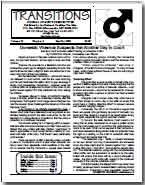Chivalry has declined since it first dignified medieval men’s pursuit of excellence. On its inception in twelfth-century Europe, chivalry offered knights new opportunities for camaraderie, heroism, and comity in battle; moreover, it both occasioned an ethic for men’s individual conduct and modelled a renowned, embodied masculine character for men who aspired to success at court. Chivalry required discipline and accomplishment; its measure was, therefore, personal and performative. Its core traits—bravery, honour, courtesy—influenced gentility and gentlemanliness, which from the fifteenth century onwards increasingly gauged the conduct of armigerous and professional men.
Once its persistent impact on British masculinities finally dwindled in the early twentieth century, chivalry meant little more than men’s benevolent placatory or protective deeds. This meaning has endured and has consequently reinforced disturbing assumptions about twenty-first century male disposability. Men have traditionally appeased women; men have also subordinated themselves to customary gynocentric societal assumptions of women’s parental superiority—the still-current chivalric rescue maxim, women and children first means just that—and men have steadfastly enlisted, or have been conscripted, to serve and protect in various armed forces. The atrocities of World War One rendered chivalric heroism unconvincing, but men still disproportionately sacrifice themselves as combatants. Some might claim that chivalry is dead; its spirit endures, however, and is deadly to men.
From New Male Studies: An International Journal – Vol. 1, Issue 3, 2012, pp. 151-153.
Source: Nigel Saul, CHIVALRY IN MEDIEVAL ENGLAND, Cambridge, Massachusetts: Harvard University Press (http://newmalestudies.com/OJS/index.php/nms/article/view/53/50)


